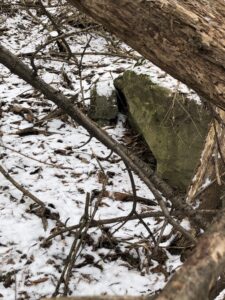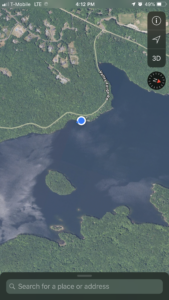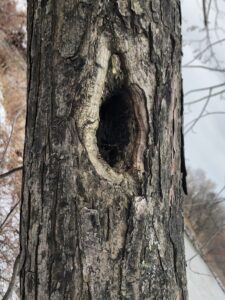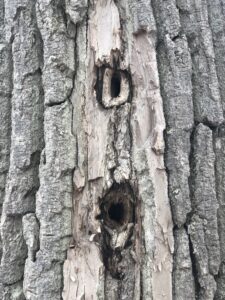November 25, 2018 by gcbudd
November- in the style of Aldo Leopold
Stick Season
The trees tower over us, each pine taller than the next. Each year, after the bursting colors of autumn have passed, there comes a rather bland period between crisp fall and snowy winter. The ground is coated in a thick blanket of twigs and dried leaves. Our feet traverse it cautiously, as if walking on a sea of dead. With the setting sun skipping its light across the reservoir the surrounding trees begin to fade into dusk. We bring our muddy shoes out of the leaves and place them gently on the edge of the rocks. Our soles are met with a new carpet of electric moss. It hugs the boulders on all sides shielding it from the icy cold that is to come. Some feel emptied by the baring trees and their fragile sticks; I find comfort in the silence. The empty wood reeks of abandonment, the resin of what summer activity left behind. Snags stick proudly out of the hardened soil and small finches hop around looking for the last of the living bugs. This brief moment will not last long and many take it for granted but death is not to be mourned it is to be celebrated for the past life it has lived and the new life in its future.
A comparison of two places- in the style of Mary Holland
Salmon Hole in Burlington Vermont has a different feel to it than the Easton Connecticut Reservoir. Naturally, as we approach the winter months, there are patterns of drying dead leaves on the ground and bare trees surrounding the water’s edge at both locations. The aspects that set these two places apart mostly have to do with geography. Northern Vermont’s climate is much different than southern Connecticut’s, visiting these two places only a week apart allowed me to see how much impact ten to fifteen degrees can make. There was snow on the ground before my visit to Salmon Hole, which caused the leaves and sticks to mix in with the mud created by the slowly melting snow. The water levels were much higher than my previous visit in early November and there was an abundance of mushrooms accumulating on most of the dampened tree trunks. There are very little coniferous trees in the salmon hole area, the forest is mainly American Beech, a variety of Maple, and Basswood, while at the Easton reservoir the small grouping of trees are mainly small and skinny deciduous trees, bordered by tall pines. The water level in the reservoir was also abnormally high, but not due to melting snow, instead it was because of the increasing amounts of rain storms that occurred throughout the entire month of November. The high waters of the reservoir were not even close to freezing over while at Salmon hole the edges of the river bank were frosty with ice. This is something that struck me as interesting because of the movement that the river has compared to the complete stillness that is the reservoir. if these two places were in the same location I am sure of the fact that the reservoir would have frozen over before the river, but because of the rivers constant motion it does not freeze as easily.


 Since the beginning of this journey I have noticed many difference aspects of the landscape that show human use both presently and historically. Back in October I noticed a large amount of bricks scattered on the ground and some built into a fire pit; there were freshly burnt sticks inside, indicating that someone had been either living or spending time in this area. Also, next to the fire pit is what looks like a shelter made of sticks meant to hold a tarp above it. This shelter and fire pit are still here, I saw them during my last visit, but do not seem to be getting much use recently.
Since the beginning of this journey I have noticed many difference aspects of the landscape that show human use both presently and historically. Back in October I noticed a large amount of bricks scattered on the ground and some built into a fire pit; there were freshly burnt sticks inside, indicating that someone had been either living or spending time in this area. Also, next to the fire pit is what looks like a shelter made of sticks meant to hold a tarp above it. This shelter and fire pit are still here, I saw them during my last visit, but do not seem to be getting much use recently. Winter can feel bitter sweet at times.
Winter can feel bitter sweet at times. October 18, 2018
October 18, 2018  November 11, 2018
November 11, 2018 December 4, 2018
December 4, 2018










